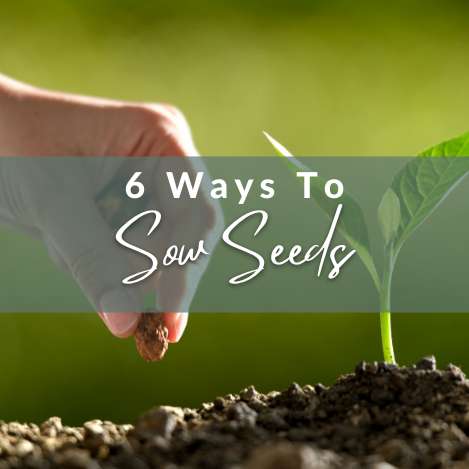There are many ways to start seeds. How you start seeds will depend on your circumstances and what you are looking to achieve. All seeds can be started in the ground. This is how they germinate in nature. Seeds will germinate when the conditions are right for each individual seed.
We use these additional methods when we are trying to control the environmental conditions the seeds and seedlings are exposed to. This is most commonly done for season extension and increasing germination rates by setting the right conditions. It is also done as a method for space optimisation and getting the most from your growing space. For example if I know a bed has a crop finishing in 2 weeks, I can start some seedlings now that I will put in that bed when it’s free. Now I have gotten 2 weeks head start on that second crop. If that second crop is going in at the end of the season that 2 weeks could be all the difference in getting a good crop for a fall garden.
The 6 methods for starting seeds are:
1. Direct sow
2. Soil blocks
3. Ziplock bags
4. Tubs
5. Toilet roll
6. Tray
1. Direct Sowing
Some seeds need to be direct sown as they do not transplant well. When you germinate a seed out of the ground, you need to transplant it to a bigger pot or transplant it to the ground.
Carrots and other root crops must be directly sown in the ground as they do not transplant well.
2. Zip lock bags
One way of getting a good seed germination rate is using zip lock bags. Get a wet paper towel with seeds placed on it and place in a zip lock bag. Place this bag in a warm dark place and the seeds will germinate in a few days.
It is important to remove the germinated seed carefully and place in soil the correct way up. This germinated seed can be placed in a soil block or seedling tray for transplanting outside when a good root system has formed.
3. Soil Blocks
Soil blocks are a great way to start seeds. The challenge with soil blocks is getting a good consistent soil mix that will hold together. As the roots develop a small soil block can be transplanted into a larger soil block. The roots are air pruned this way and transplant shock has less effect due to this air pruning.
4. Seed Trays
This is the most common method of starting seeds, the problem with these is a lot of them do not last and the plastic ends up as waste. If you leave a plant too long in the seed trays they can become root bound and cause shock when transplanted.
5. Tubs
Starting seeds in tubs is a great way to germinate seeds and it can save a lot of space at the start of the growing season.
If you have a lid this can trap moisture in and ensure good germination. NOce shoots start to appear the lid can be removed. As the seeds develop into shoots these can be picked out and transplanted into larger methods of seed growing. Make sure you keep the tub to reuse next year.
Some gardeners will have a dedicated seedbed to start seedlings before moving them on as they grow.
6. Toilet roll
Yes, toilet roll is great to use as a seed starting method. Especially for Corn and Peas the depth of this method is great for these plants. When ready the toilet roll and plant can be placed directly into the soil, as the toilet roll will compost in the ground allowing the plant to continue its growth.
You can also cut the toilet roll in 3 and use these 3 sections as smaller seed pots. If they get wet they can fall apart but you normally have them planted before it deteriorates too much.
Newspaper is also a great way to make pots and can also be planted straight in the ground.





